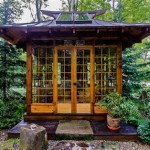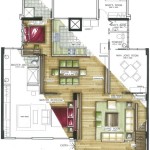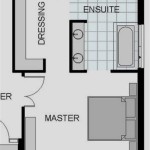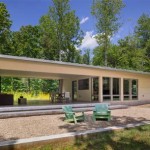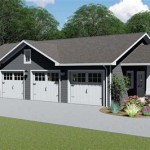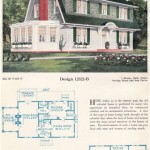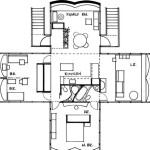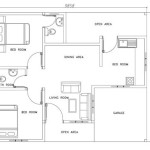Modern Metal Building House Plans: A Comprehensive Guide
Metal building house plans represent a growing trend in residential construction, offering a blend of durability, affordability, and design flexibility. These structures, originally conceived for industrial and agricultural purposes, are increasingly being adapted for residential use, providing homeowners with a unique and cost-effective alternative to traditional construction methods. This article will explore the key aspects of modern metal building house plans, encompassing their advantages, design considerations, construction process, and potential challenges.
The appeal of metal building homes lies in their inherent characteristics. Steel, the primary material used in these structures, is known for its strength and resilience. This translates to buildings that can withstand extreme weather conditions, including high winds, heavy snow loads, and seismic activity. Furthermore, steel is resistant to pests such as termites and rodents, eliminating the need for costly preventative treatments. The long lifespan of steel buildings also contributes to their overall cost-effectiveness, as they require less maintenance and fewer repairs compared to traditionally built homes.
Beyond their structural advantages, metal building homes offer significant design possibilities. The open-span capabilities of steel framing eliminate the need for interior load-bearing walls, allowing for flexible floor plans and expansive living spaces. Large windows and skylights can be easily integrated into the design, creating light-filled interiors. The exterior can be customized with a variety of cladding materials, such as siding, brick, stone, or stucco, to achieve the desired architectural aesthetic. This adaptability makes metal building homes suitable for a wide range of architectural styles, from modern minimalist designs to rustic farmhouses.
Cost-Effectiveness and Affordability
One of the primary drivers behind the increasing popularity of metal building homes is their cost-effectiveness. The initial investment in a metal building kit is often lower than the cost of materials for a conventional wood-frame house. This is due to the efficiency of metal building fabrication, which allows for precise cuts and minimal waste. The pre-engineered nature of these kits also reduces labor costs, as the components are designed to fit together seamlessly, simplifying the construction process.
The long-term cost savings associated with metal building homes are equally significant. Steel's durability minimizes maintenance and repair expenses, while its resistance to pests eliminates the need for chemical treatments. Moreover, metal buildings are inherently energy-efficient, particularly when properly insulated. Steel reflects solar radiation, reducing cooling costs in hot climates. The airtight construction of metal buildings also minimizes air leaks, further enhancing energy efficiency and reducing utility bills. The combination of lower initial costs and long-term savings makes metal building homes an attractive option for budget-conscious homeowners.
However, it is essential to consider all associated costs when evaluating the affordability of a metal building home. These costs may include site preparation, foundation work, insulation, plumbing, electrical wiring, interior finishes, and exterior cladding. It is also important to factor in the cost of permits and inspections, which can vary depending on local building codes and regulations. A comprehensive cost analysis, taking into account all expenses, is crucial for determining the true affordability of a metal building home.
Design Considerations and Customization Options
Metal building house plans offer a high degree of design flexibility. The open-span design of steel framing allows for large, unobstructed living spaces, enabling homeowners to create custom layouts that meet their specific needs and preferences. Interior walls can be positioned anywhere within the structure, providing maximum flexibility in room configurations. This makes metal building homes well-suited for open-concept designs, as well as more traditional floor plans with defined rooms.
The exterior of a metal building home can be customized with a wide range of cladding materials, allowing homeowners to achieve the desired architectural style. Siding, brick, stone, stucco, and wood can all be used to create a visually appealing and aesthetically pleasing exterior. The choice of cladding material will depend on factors such as budget, climate, and personal preferences. It is important to select cladding materials that are compatible with steel framing and that provide adequate weather protection.
Insulation is a critical aspect of metal building design. Proper insulation is essential for maintaining comfortable indoor temperatures, reducing energy consumption, and preventing condensation. Various insulation options are available, including spray foam, fiberglass batts, and rigid foam boards. The choice of insulation will depend on factors such as climate, budget, and desired R-value. Spray foam insulation offers excellent thermal performance and air sealing, but it is typically more expensive than other options. Fiberglass batts are a cost-effective option, but they may not provide as much thermal resistance. Rigid foam boards offer good thermal performance and are relatively easy to install.
Furthermore, integrating windows and doors into a metal building home requires careful planning. The size and placement of windows and doors should be considered in relation to natural light, ventilation, and energy efficiency. High-performance windows and doors can significantly reduce energy consumption and improve indoor comfort. It is also important to ensure that windows and doors are properly sealed to prevent air leaks and water intrusion. Skylights can be used to bring natural light into the interior of a metal building home, but they should be carefully positioned to minimize heat gain during the summer months.
The interior design of a metal building home offers endless possibilities. The open-span design allows for flexible furniture arrangements and creative use of space. Exposed steel beams can be incorporated into the design to create a modern industrial aesthetic. Alternatively, the steel structure can be concealed with drywall or other interior finishes to create a more traditional look. The choice of interior finishes will depend on personal preferences and design goals. It is important to consider the acoustics of the interior space, as metal buildings can be prone to reverberation. Sound-absorbing materials, such as carpets, curtains, and acoustic panels, can be used to improve the sound quality of the interior space.
Construction Process and Potential Challenges
The construction of a metal building home typically involves several stages, starting with site preparation and foundation work. The building site must be properly graded and compacted to ensure a stable foundation. A concrete slab foundation is commonly used for metal building homes, but other foundation types, such as pier and beam foundations, can also be used. The foundation must be designed to support the weight of the steel structure and to withstand local soil conditions.
Once the foundation is in place, the steel frame is erected. This process involves assembling the steel columns, beams, and rafters according to the manufacturer's specifications. The steel components are typically pre-fabricated and pre-cut, which simplifies the erection process. However, it is essential to have experienced erectors on-site to ensure that the steel frame is properly aligned and securely fastened.
After the steel frame is erected, the exterior cladding is installed. This may involve attaching siding, brick, stone, or other materials to the steel frame. The cladding must be properly sealed to prevent water intrusion and to provide adequate weather protection. Insulation is typically installed before or during the cladding process, depending on the type of insulation used.
The interior finishing work involves installing plumbing, electrical wiring, HVAC systems, and interior finishes. This process is similar to that of a conventional wood-frame house. However, it is important to consider the unique characteristics of metal buildings when installing these systems. For example, electrical wiring must be properly grounded to prevent electrical hazards. Plumbing pipes should be insulated to prevent freezing in cold climates.
Despite the advantages of metal building homes, there are also potential challenges to consider. One challenge is obtaining financing for a metal building home. Some lenders may be hesitant to finance these structures, as they are not as common as conventional wood-frame houses. It may be necessary to work with a lender who specializes in construction loans or alternative financing options. Another challenge is complying with local building codes and regulations. Some jurisdictions may have specific requirements for metal buildings, such as fire resistance ratings and wind load requirements. It is important to consult with local building officials to ensure that the metal building home meets all applicable code requirements.
Furthermore, quality control is crucial throughout the construction process. It is essential to work with reputable metal building manufacturers and experienced contractors to ensure that the steel frame is properly fabricated and erected. Regular inspections should be conducted to verify that all components are installed according to the manufacturer's specifications and that the building meets all applicable code requirements. Proper quality control will help to ensure the durability, safety, and long-term performance of the metal building home.
In conclusion, modern metal building house plans offer a compelling alternative to traditional construction methods. Their inherent strength, durability, design flexibility, and cost-effectiveness make them an attractive option for homeowners seeking a unique and affordable living space. While challenges exist, careful planning, meticulous execution, and collaboration with experienced professionals can pave the way for successful completion of a metal building home project.

Catalog Modern House Plans By Gregory La Vardera Architect

Simple Practical Modern Metal Home Hq Plans Pictures Building Homes Floor Shed To Tiny House

Catalog Modern House Plans By Gregory La Vardera Architect

Metal Building Design Trends Including Rustic Modern

Modern Farmhouse Floor Plans Architects Metalbuildinghomes Org

Steel Building Ideas The Picture For Various Metal 79385492 Metalbuildings House Plans Pole Barn Barndominium

Modern Farmhouse Floor Plans Architects Metalbuildinghomes Org

Shreveport Barndominium One Story House Plan

Metal House Plans

Metal Building Homes Small House Design Ideas Modern Construction Designs Cladding

